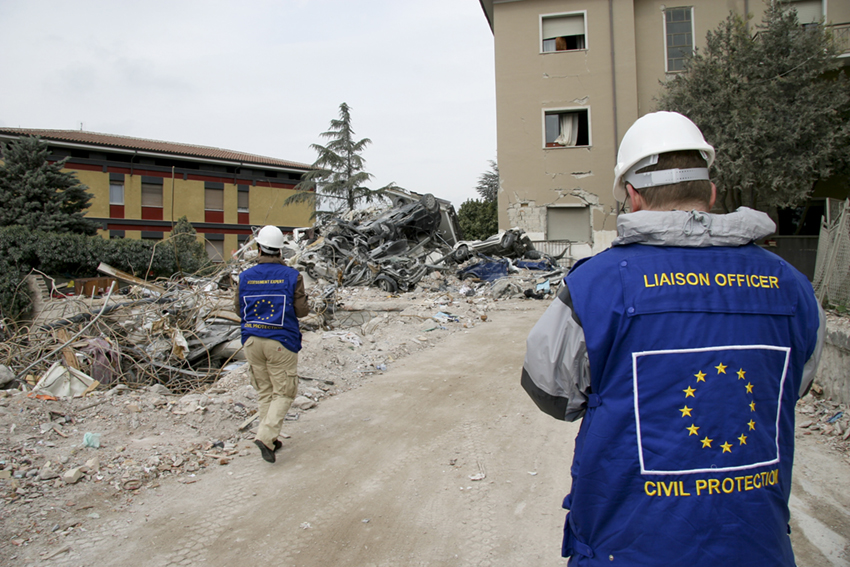EU Civil Protection Mechanism

The Civil Protection Mechanism - established in 2001 and reformed several times - coordinates the European response to natural and man-made disasters. Among its objectives are the promotion of cooperation between national civil protection authorities and the strengthening of public awareness and risk preparedness.
The Mechanism consists of a voluntary pool of resources pre-committed by Member States to be deployed immediately within or outside the Union and ensure in case of emergency a rapid, effective and coordinated assistance to the affected populations. The operational heart of the Mechanism is the Emergency Response Coordination Centre: active 7 days a week, 24 hours a day to coordinate the European response to disasters.
At the European level, Civil Protection is embedded in the Directorate General for Humanitarian Aid and Civil Protection of the European Commission and counts the membership of 33 countries: in addition to the 27 member countries of the European Union, Iceland, Norway, the former Yugoslav Republic of Macedonia, Montenegro, Serbia and Turkey.
On March 7, 2019, the Council adopted a decision to amend the Mechanism with the aim of further strengthening the resource pool, training, and risk prevention.
Inside the European Union. When a participating state is unable to handle a large national emergency, it may request assistance from the other participating countries through the MIC, which receives the request and informs all the other countries involved. CECIS is responsible for communicating the request, allowing immediate dialogue between 24-hour operations centres in the various countries. The requests made by the affected country are matched by the system to offers of assistance from countries that decide to intervene. CECIS provides all the countries with information and updates on the emergency until it is resolved. The kind of intervention will vary depending on the event. The MIC then facilitates dispatch of assessment and/ or coordination teams, experts, civil protection modules and ensures co-funding of assistance transport offered by participating states, but management of aid is the responsibility of the state requesting intervention.
Outside the European Union. The Mechanism may be activated by an affected country with a request for assistance to the MIC. In these cases, the High Representative for foreign affairs and foreign policy together with the Presidency of the European Council coordinates the political response, in collaboration with the Commission. This guarantees links with the affected country, facilitating rapid deployment of community assistance, above all during the initial hours of the emergency.
If the United Nations are involved, they will assume management of operations. Activity is carried out by the European Commission Humanitarian Aid department – ECHO in close collaboration with the United Nations Office for the Coordination of Humanitarian Affairs –OCHA.
The Mechanism sets out a comprehensive framework for EU disaster risk prevention activities aimed at building resilience to disasters through prevention and the promotion of a culture of prevention.
In this perspective, risk assessments, planning actions, and evaluation of risk management capacities conducted by each member state at the national or sub-national level are essential to ensure an integrated approach to disaster management that effectively links prevention, preparedness, and emergency response activities.
The Emergency Response Coordination Center (ERCC) is the heart of the Mechanism. It coordinates the delivery of assistance to countries affected by disasters-from basic necessities to advise, from civil defense teams to specialized equipment.
The Center ensures the rapid deployment of resources and serves as a coordination center between all EU member states, the six additional participating states, the affected country, and humanitarian and civil protection experts.
The ERCC operates 24/7 and can assist any country inside or outside the Union affected by a major disaster at the request of national authorities or a UN body.
It provides emergency communications and monitoring tools through the Common Emergency Communication and Information System (CECIS), which enables the real-time exchange of information between countries through a web-based platform.
European Emergency Response Capacity refers to the voluntary pool of resources and expertise that Member States provide for emergency response operations in case the Mechanism is activated.